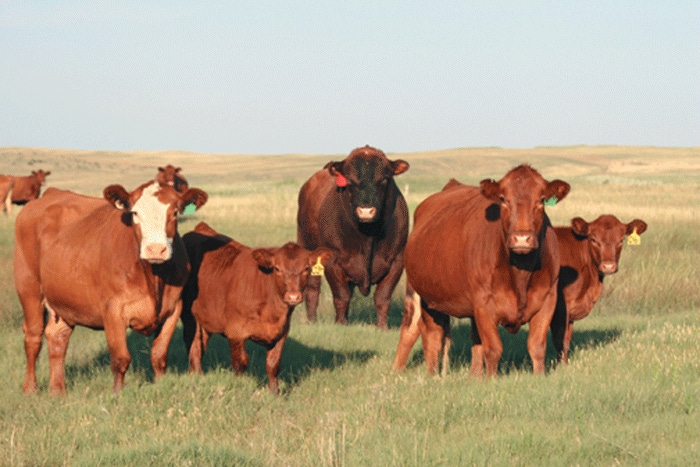
USDA inspectors prevent fever ticks from crossing Mexican border
USDA-APHIS inspectors at the Colombia-Solidarity International Bridge near Laredo halted the inbound transport of a trophy deer hide from entering the U.S.Cattle fever ticks are capable of carrying and transmitting babesia, a blood parasite deadly to cattle.A permanent fever tick quarantine line a few hundred yards to five miles wide runs along the U.S. border through eight south Texas counties.

USDA-APHIS inspectors at the Colombia-SolidarityInternational Bridge near Laredo halted the inbound transport of a trophy deer hide from entering the U.S. after Custom and Border Protection (CPB) agents ordered a secondary inspection of cargo when a hunter notified authorities he was transporting the deer hide into Texas. The incident occurred on Jan. 13. Detailed examination of the hide revealed there were 23 live ticks on the hide and it was voluntarily surrendered for destruction.
A U.S. Department of Agriculture entomologist identified the pest as Boophilus sp., which includes cattle fever tick, a pest of quarantine significance in cattle. Cattle fever ticks are capable of carrying and transmitting babesia, a blood parasite deadly to cattle.
Although the ticks were eradicated from the U.S. in 1943, the vigilance against the pest continues through a comprehensive “no tolerance” eradication program largely because of the existence of the disease in Mexico.
A permanent fever tick quarantine line a few hundred yards to five miles wide runs along the U.S. border through eight south Texas counties and is patrolled on horseback by the USDA’s Tick Force to protect against stray “ticky” livestock and wildlife crossing the Rio Grande.
“This is the largest [number] of fever ticks that our agriculture specialists have found on a single deer hide this season,” said Sidney Aki, CBP Port Director, Laredo. “Stopping fever ticks at the border illustrates the crucial role CBP agriculture specialists play in protecting American agriculture and livestock and preventing possible adverse impact to the U.S. cattle industry.”
“This represents our first line of defense against a serious animal disease that could devastate 90 percent of the U.S. cattle population if not kept in check along the border,” says Dr. Mathew Pound, entomologist at USDA’s Knipling-Bushland U.S. Livestock Insects Research Laboratory in Kerrville, Texas, who plays an active role in research and development of new technology designed to help fight the cattle fever war.
Before eradication efforts began, Pound says cattle fever ticks were widespread throughout the entire southern United States. Direct and indirect economic losses were estimated in 1906—the year the disease was first detected in the U.S.—to be $130.5 million, or about $3 billion today.
“Concerning the deer hide in question, there is probably a low chance of the ticks contaminating cattle in Texas. Cattle fever ticks are generally a one-host threat and only the female drops off the host to lay her eggs. But if the ticks in question were fully engorged, there is a potential the tick could infect cattle, horses, domestic deer and such,” Pound adds.
“We have a zero tolerance to cattle fever in the U.S. and that is why we have such a comprehensive program of eradication and inspections.”
USDA-APHIS considers the potential of fever ticks being purposefully introduced into the U.S. cattle market and inspectors are careful in evaluating all instances of cross-border contamination.
“When we think of bioterrorism we usually think about contamination of the food supply system. But fever ticks, for example, could be another method of creating drastic damage to food delivery systems, such as widespread infection of U.S. cattle herds.”
“We spend great amounts of manpower and resources to make certain this doesn’t happen,” he adds.
About the Author(s)
You May Also Like





